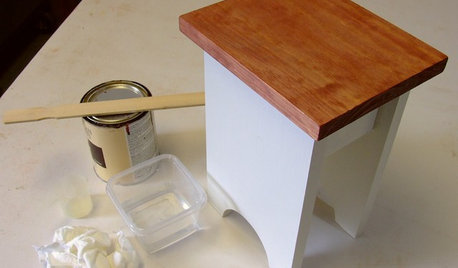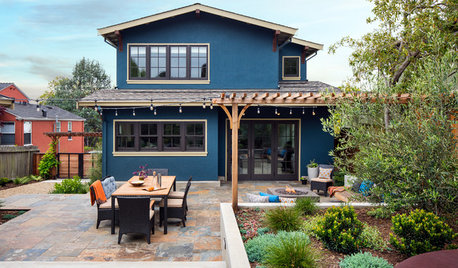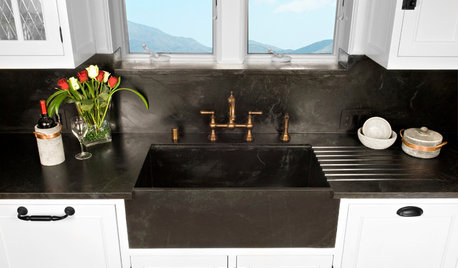Sand in between coats of stain?
dominogold
17 years ago
Featured Answer
Comments (8)
User
17 years agoRelated Professionals
Effingham Cabinets & Cabinetry · Idaho Carpenters · Cranston Flooring Contractors · Kingston Flooring Contractors · Mukilteo Flooring Contractors · Murfreesboro Flooring Contractors · Ocoee Flooring Contractors · Saint Louis Park Flooring Contractors · Sarasota Flooring Contractors · Swansea Flooring Contractors · Wesley Chapel Flooring Contractors · Cocoa Flooring Contractors · Charleston Furniture & Accessories · Reston Furniture & Accessories · Spartanburg Furniture & Accessoriesmike_kaiser_gw
17 years agobrickeyee
17 years agosuncouch
17 years agorussmahogany
17 years agosuncouch
17 years agorussmahogany
17 years ago
Related Stories

DIY PROJECTSCool Tip: Mimic Stain With a DIY Color Wash
Get the look of an oil-based stain without all the bother, using this easy wash made with paint
Full Story
KITCHEN CABINETSKitchen Cabinet Color: Should You Paint or Stain?
Learn about durability, looks, cost and more for wooden cabinet finishes to make the right choice for your kitchen
Full Story
KITCHEN DESIGN8 Stunning Stain Colors for Kitchen Cabinets
Transform raw wood for custom-looking cabinetry with a stain that fills your need for color but lets the grain show through
Full Story
HOUSEKEEPINGHow to Clean Grout — Stains and All
If your grout is grossing you out, this deep-cleaning method will help it look new again
Full Story
DECORATING GUIDESMake a Cool Block-Printed Coat Rack
Hang fall's hats and scarves on great patterned coat hook you can make for less than $25
Full Story
LANDSCAPE DESIGNHow to Make Your Painted or Stained House Feel at Home in the Landscape
Use color and texture to create a pleasing connection between your house and garden
Full Story
HOUSEKEEPINGDon't Touch Another Stain Before You Read This
Even an innocent swipe with water may cause permanent damage. Here's what to know about how rugs and fabrics react
Full Story
KITCHEN DESIGNKitchen Sinks: Soapstone for Germ-Free Beauty and Durability
Stains and bacteria? Not on soapstone's watch. But this sink material's benefits don't come cheap.
Full Story
CURB APPEALWhen to Paint Your House Brown
Nature loves brown, from rich soil to sunlit sand, and so do home exteriors with a traditional or Craftsman bent
Full Story
KITCHEN CABINETSKeeping Cabinet Color on the Down Low
Give just base cabinets a colorful coat for a kitchen sporting character and a spacious look
Full StorySponsored
Your Custom Bath Designers & Remodelers in Columbus I 10X Best Houzz
More Discussions











lindac